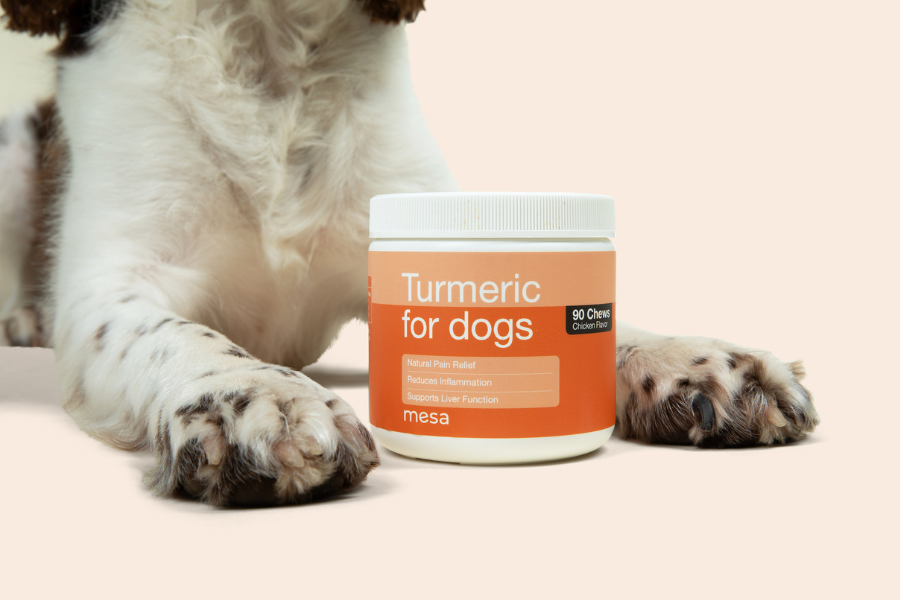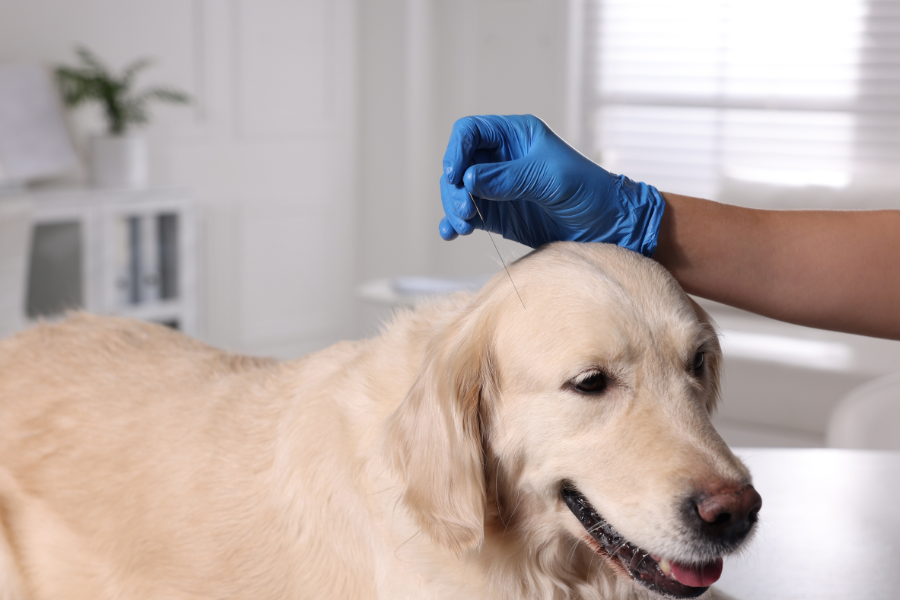Noticed your fur-baby acting a bit sluggish lately? Perhaps they're not as jazzed about their daily couch leap or backyard sprints like they used to be. If you're clocking these slight shifts in their vibe, it could be that ever-so-common pesky issue - arthritis. Now, here's that million-dollar question we all ask ourselves at some point: "When do dogs typically get arthritis, anyway?"
Well, it's not that cut and dry because it really depends on things like their breed, size, and daily routine. But hey, don't sweat it—we've got you totally covered. Whether you're raising a hyper pup or you’ve got a seasoned "wise-tail" lounging around at home, getting the lowdown on arthritis can help you give them the best care, every step (or wag) of the way!
What the Heck Exactly Is Arthritis in Dogs, Anyway?
Before we dive into the when and how, let's get the what down pat. You know arthritis, right? Or let's get fancy, osteoarthritis (OA). It's this pesky joint condition that brings about inflammation, ouchies, and stiffness. Over time, your fur-baby’s cushioning cartilage takes a beating and breaks down. The end result? Pain and a not-so-happy camper with a reduced range of action.
Imagine it like this - all those zoomies, never-ending games of fetch, and day-to-day escapades your doggo loves? Well, they can play a bit of havoc on their joints over time.
Here's a fun (not so fun) fact - arthritis is one of those things us dog owners dread. And the cherry on top? Roughly 1 in 5 of our four-legged friends will have a run-in with it during their lifetime.
At What Age Do Dogs Usually Get Arthritis?
Well, arthritis doesn't just pop up overnight, oh no. It's more of a slow burn, gradually creeping in over time. And yes, your fur friend's age plays a role.
To break it down for you:
- Tiny pooches (under 20 lbs) usually start feeling the arthritis blues around 8-10 years old. Some might even feel it earlier if they've hit the genetic jackpot.
- On the other hand, medium-sized woofers (20-50 lbs) might start showing symptoms from about 6-8 years old.
- There's a caveat for the big boys and girls (50+ lbs) though, they’re more susceptible to arthritis, and can start to show signs as early as 4-6 years old.
Shocker, right? So, it's not just the seniors who get hit with arthritis. Our high-energy buddies, like Labradors, German Shepherds, and Golden Retrievers, can be especially prone to early arthritis. Who knew size could matter this much, eh?
Factors That Make Arthritis More Likely
Arthritis doesn’t play fair, but some factors can increase a dog’s chances of developing it sooner rather than later. Pay extra attention if your dog checks any of these boxes:
1. Breed Genetics
Certain breeds are genetically predisposed to arthritis and joint issues. Large breeds like Rottweilers, Bernese Mountain Dogs, and Saint Bernards are particularly at risk. Even smaller breeds like Dachshunds and Pugs can develop joint problems due to their unique body structures.
2. Weight
Carrying around extra pounds puts a lot of stress on your dog’s joints, no matter how old they are. Obesity can fast-track arthritis development, especially in mid-sized and large dogs. The takeaway? Keep your pup at a healthy weight for their breed and size—they’ll thank you for it!
3. Activity Level
Dogs that are highly active, like working breeds or athletic dogs competing in agility, may experience more joint wear-and-tear. On the flip side, couch potatoes aren’t immune—low activity levels can weaken muscles that support their joints. Striking a balance is key.
4. Past Injuries
Did your dog have a past injury—like a sprain, fracture, or torn ligament? Injuries can weaken joints over time and make them more prone to arthritis as your pup ages.
5. Joint Conditions
Some dogs are born with orthopedic conditions, like hip dysplasia, that predispose them to arthritis as they age. If your dog has been diagnosed with a joint condition, regular vet visits and proactive care are essential.
How to Spot if Your Fur Kid is Battling Arthritis
Okay, let’s face it. Our fur babies can't exactly pull us aside and say, "Hey, I think I might have arthritis." So, we gotta play Sherlock Holmes and look for clues in their behavior. If you're not sure where to start, here are some things to keep an eye out for:
- Is your doggo limping or favoring a leg after they’ve had a sprint in the park?
- Do they seem a bit stiff, particularly after a long nap or a chill-out session on the couch?
- Are they suddenly developing a fear of stairs or jumping on furniture – stuff they used to do all the time?
-
Is your usually bouncy pup not so enthusiastic about playtime and walks anymore?
- Are they getting irritable or extra sensitive when you pet them?
- Have you noticed any muscle loss, particularly in their back legs? They might be shifting their weight to dodge the ouchies.
If your pup is showing one or more of these signs, it's probably time to ring up your vet and schedule a heart-to-heart about what's going on.
Care and Prevention Tips to Keep Arthritis at Bay
The good news? There’s a lot you can do to help your pup live comfortably, even if arthritis is in their future. Here’s how to give those pupper joints some extra TLC:
1. Stay on Top of Exercise
The right type of exercise keeps your dog’s joints healthier, longer. Low-impact activities like swimming and short, controlled walks or hikes can build muscle and reduce stiffness. Just avoid anything too intense, like long-distance running or jumping.
2. Maintain a Healthy Weight
Good ol' portion control and regular activity are your allies here. Cutting down on those extra treats might feel tough at first (we get it—those puppy eyes!), but you’ll make up for it with their improved mobility and comfort.
3. Provide Joint Supplements
Joint supplements like turmeric, salmon oil. glucosamine and chondroitin can be a great preventative measure. (We will cover more about our 2 favorites below) These ingredients help maintain cartilage health, reduce inflammation, and keep those joints in working order.
4. Use Orthopedic Beds
Fancy orthopedic dog beds can help reduce pressure on your dog’s joints while they sleep. Who wouldn’t love a supportive and cozy nap spot?
5. Elevated Food and Water Bowls
For larger breeds or dogs with arthritis in their neck or shoulders, elevated bowls can make eating and drinking more comfortable.
6. Set Up a Comfortable Environment
If your dog struggles with stairs, consider ramps or baby gates to control their movement. Keeping their environment arthritis-friendly can work wonders.
7. Regular Vet Checkups
Proactive care is key. Schedule regular checkups with your vet to monitor your dog’s joint health—and don’t wait until symptoms crop up to ask about arthritis prevention!
Treatment Options for Dogs with Arthritis
If your dog has already been diagnosed with arthritis, don’t despair! There are many ways to help manage their condition and improve their quality of life:
- You got meds - good old anti-inflammatories - straight from your vet's clinic that are great for easing joint discomfort. There are also some great anti-inflammatory foods you could incorporate.
- Then there's the option of physical therapy. Just like your workout regime, it makes your little one stronger and gets them moving again.
- Hear about acupuncture? Yes, it's a thing for dogs too and some of them totally dig it!
- Got a chubby buddy? A weight management program can help take off some of those extra pounds and ease their joint strain.
- For the really tough cases, there's always surgery. It's a big step though, so your vet will be with you every step of the way to see if it's right for your pooch.
The All-Natural Route
There are also some all-natural boosters that could make a world of difference for their comfort and agility. The dog lovers' community can't stop raving about two in particular: turmeric and salmon oil.
First up? Turmeric. You might recognize this yellow spice from your favorite latte, but did you know it's a secret weapon against inflammation, too? It's all thanks to curcumin, an ingredient that naturally fights swelling and pain in your dog’s arthritic joints. Plus, it's a breeze to sprinkle into their meals—but don't forget to chat with your vet about the right dose for your pal's size.
SHOP TURMERIC FOR DOGS NOW
Now, let's talk Salmon oil. Not only is it jam-packed with omega-3 fatty acids that dial down inflammation, but it also does wonders for your pup's coat and skin health. And the best part? The fishy taste is a total treat for most dogs, so mixing it right into their food is a no-brainer.
SHOP SALMON OIL FOR DOGS
Remember, every dog is unique, so it’s always best to sit down with your vet before introducing any new supplements into their regimen. With the right care, your beloved dog can keep wagging, playing, and living their best life!
Wrap-Up: Let's Make Those Golden Years Shine!
Arthritis in dogs? Yeah, it sounds a bit spooky, but trust me, it's something we can totally handle with the right love and care. Knowing when it could make its appearance—whether your fur buddy is a puppy at four or a senior at fourteen—gives us the upper hand to keep them strutting their stuff (with all the belly scratches they can handle, of course).
Got the 'what ifs' bouncing around about your dog’s joint health? Shoot them at your vet, but also remember to drench your paw-some bestie with extra cuddles and kisses. After all, a smidge of TLC keeps their tail thumping and their spirits high for many, many fetch games to come!
References
1) Anderson KL, Zulch H, O'Neill DG, Meeson RL, Collins LM. Risk Factors for Canine Osteoarthritis and Its Predisposing Arthropathies: A Systematic Review. Front Vet Sci. 2020 Apr 28;7:220. doi: 10.3389/fvets.2020.00220. PMID: 32411739; PMCID: PMC7198754.





